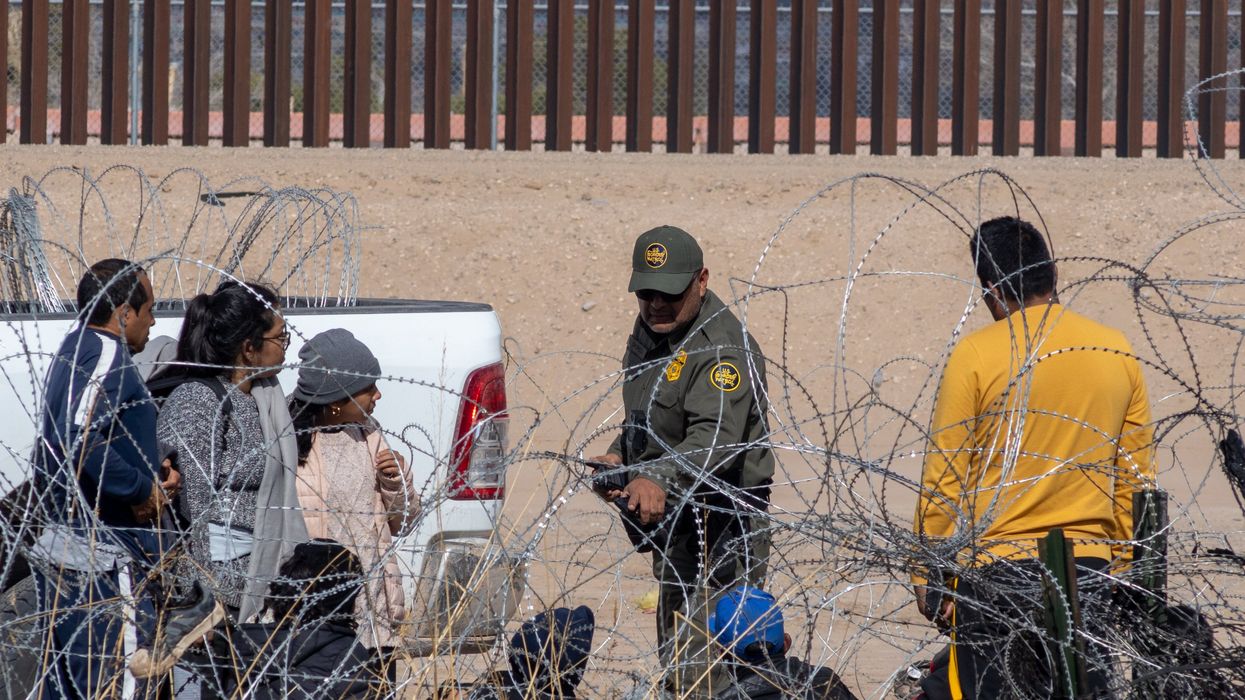Butler is a husband, father, grandfather, business executive, entrepreneur, and political observer.
Immigration and the economy have been two important American political issues not just in recent polls around the 2024 elections but for over 150 years. Immigration affects our society, all of humanity and each of us as individuals in many ways.
Before addressing some of those issues and impacts, perhaps we should acknowledge that we are all either immigrants or descendants of immigrants. Even those we think of as indigenous are the descendants of those who arrived here from distant lands, with current theories putting the first humans in the Americas somewhere between 13,000 and 30,000 years ago.
The Norse first visited North America in the 10th century but significant migration of Europeans to the Americas arguably began with the first exploratory voyage by Columbus in 1492. From there we were off to the races and we all know that it was a constant stream of immigrants who formed the basis of the society that developed into what is now the United States. And not just white Europeans but also Asians and enslaved Africans. Immigration was not just important, but integral and necessary to the early British, French and Spanish colonies, and to the formation and early development of the United States. In fact, without immigration, there would be no United States as we know it.
Through the 1860s the United States essentially had open borders and limited naturalization restrictions. But over the next 25 years or so a series of laws were passed to restrict “undesirables” from arriving. In the 1920s a national origins quota system was established. Immigration from each country was limited by the proportion of each nationality in the U.S. from the 1890 census. These laws reflected the fear of those already here that the continued influx of immigrants would threaten their economic, social, and political interests.
These same arguments exist today, as does the judgment of some that such views are nativist and xenophobic. Those restrictions were replaced in 1965 by the Immigration and Naturalization Act, which remains the core of our system today. While this law did have caps on immigration, it focused on certain preferences including family reunification, professionals and skilled labor, and refugees from certain communist and other countries. It also allowed immigrants to seek asylum from persecution based on race, religion, nationality or political opinion.
When the United States was young and undeveloped and we were adding large swaths of sparsely populated land and bringing states under the auspices of the Constitution, immigration was not a concern (unless you were indigenous) and aided in the development of our modern nation. But it is not the 1770s anymore. Nor the 1870s or even the 1970s. So, while immigration historically has been a net positive, we have to think more holistically about what it means now.
Consider the following immigration impacts and issues:
The desire of millions to immigrate to the United States belies the argument that we are a racist society that does not provide equal opportunity to succeed regardless of background. Those immigrating to the U.S. legally and illegally are seeking a better life. We continue to be the shining city on the hill, recognized as such throughout the world.
Our open society, rooted in freedom and equal opportunity, though mature, can still accommodate, manage, and benefit from immigration in a limited, controlled, and legal framework. Nearly all those who oppose the current situation as an untenable emergency understand and agree with this.
Despite the richness of our nation, not all our citizens nor others who reside here legally have adequate housing, nutrition, educational opportunities, jobs and medical services (including mental health services). And yet many of our cities now find themselves spending vast amounts of money they do not have to provide such services to people living here illegally. Many poor citizens naturally wonder why such funds were not available to alleviate their conditions and suspect this activity reduces the already limited resources available to them.
The longer-term resource issues will negatively affect those on the lower end of the socioeconomic spectrum. While politicians are elected to improve the economic conditions of their constituents and ensure their opportunity to advance, some will insist that immigration at these levels is good for our nation and we must fully accept these immigrants into society, including the right to work and eventually full citizenship. Most of these immigrants are likely to be unskilled or low-skilled and will hold down wages for a generation or more. Businesses and the rich will be happy to benefit from the lower labor costs and the lower cost of maintaining their lifestyle.
Professionals are also affected by immigration. The H1-B visa program allows 65,000 (but often more) immigrants with specialized skills into the country each year specifically to work. They can work for three years, extend for three more, and often end up as permanent residents and even citizens. The program is not supposed to negatively affect American professionals but as a government incursion into the marketplace, it inevitably does. At any given moment there are over half a million active H1-B workers in the United States. It is also somewhat outdated given that most of these professionals could be accessed remotely or by global corporations without the need for immigration. The beneficiaries again are corporate America and not Americans themselves. And we should ask what the impact is on the home countries of these visa holders. Are we not stealing, at least temporarily, the best and brightest resources of countries that could benefit from their productivity more directly than just sending money back home?
The asylum and refugee system as currently operated is broken. Essentially every immigrant crossing illegally expresses a fear for their lives and is released into the country for years until their cases are adjudicated. If they show up for their court appearance in the distant future, and if history continues, the overwhelming majority of cases will be rejected and they will be deported. Of course, in the meantime, they may have given birth to a child who, under current legal interpretations, is a citizen. But again, let’s consider the impact on the asylum seekers’ home countries. Yes, we assume a huge majority are seeking a better life for themselves and their family. But whether it is mere economic challenges or a brutal political environment, how will things improve if those with the desire, motivation, and dedication to do something about it choose to leave? How do things get better if the ones who could fix the problems abandon them instead?
On 9/11 a small handful of terrorists killed nearly 3,000 Americans, and twice that many have been killed in the decades-long wars that have followed. Given that certain groups have a continued intent to attack America, it is likely they have taken advantage of our relatively open borders since 2021. There have been 8 million encounters at the border; most people involved have been caught, processed, and released, with 1.7 million known “gotaways.” It only takes a tiny portion of these individuals to conduct one or more terror attacks in the U.S. that potentially far exceed what we experienced in 2001.
While this is an incomplete list, it seems obvious that an open border policy is inappropriate to our times, degrading to many citizens and dangerous to us all. I believe there is bipartisan agreement on this with only a small fringe supporting open borders. It is obvious that immigration has been a net positive for America historically, and we should all appreciate the desire of most immigrants, including those coming illegally, to seek a better life for themselves and their families.
However, were I a politician, I would be arguing not just for stricter controls. We should implement a 10-year moratorium on all immigration. We can use this time to fully process the migrants who are here, assimilate those that qualify to stay, send the others back home, and have a full debate on what kind of immigration policy we should implement in the future.




















